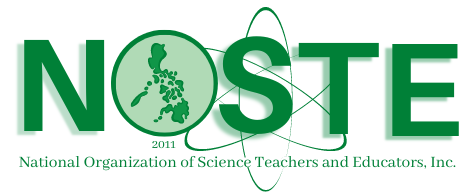Integrating strategic intervention materials (SIM) in Science to low achieving learners
Yolly Ann ARANDA1, Renz Aena DIAZ1, Melbin SOMBILON1, Cheryl Ann F. GICANA1,2
1Research Department – College of Education, Arts and Sciences, Capiz State University, Pontevedra, Capiz, Philippines
2Teacher Education Department, Capiz State University, Pontevedra, Capiz, Philippines
Corresponding author’s email: jfgicana@yahoo.com
Abstract
This quasi-experimental study employed pre-test-post-test research design to investigate the effect of the integration of strategic intervention material (SIM) in teaching grade seven Science to low achieving learners. This study was conducted to determine the pre-test and post-test performances of SIM and nonSIM group, and to find out the significant difference between the performance of the two groups. The researchers used purposive sampling to identify the respondents. After the pre-test, least learned topics were identified. These topics were Substance and Mixture, Metals and Non-metals and Solution. Descriptive and inferential statistics were employed to analyze and interpret the obtained data. Prior to the intervention of the study, the two groups were equivalent in terms of their academic performance in Science. The post-test result of the SIM group was higher compared to the post-test result of the non-SIM group. Also, a highly significant difference was found between the pre-test and post-test performance of SIM group after the conduct of the intervention. The investigation revealed that SIM as an instructional material was effective in teaching grade seven science to low achieving learners.
Keywords: Science Education, Chemistry, Strategic Intervention Material (SIM), Quasi-experimental research, Central Philippines
References
- Barredo, K.J. (2012). Evaluating the effectiveness of using strategic intervention material in improving the academic performance in science in science strategic intervention material.
- Dela Cruz, M. (n.d.). Effects of lack of instructional material. Retrieved from: http://www.Academia.eu/13158439/effects-of-lack-oninstructional-materials, September 21, 2018
- Dy, J (2011, December 7). Teaching physics through strategic intervention materials (SIM). Retrieved January 2018 from http://jho-o.blogspot.com/2011/12/ teaching-physics-through-strategic. html
- Gagne, R. M., (1985). The conditions of learning and theory of instruction. New York: CBS College Publishing.
- KR20 & Coefficient Alpha (2007). Retrieved from: http://www.pbarrett.net/techpaper/kr20.pdf, September 18, 2018
- Parsons, R.D., Hinson, S. L., and SardoBrown, D. (2001). Educational psychology: A practitioner researcher model of teaching. Toronto, Ontario: Wadsworth.
- Plenos, J. (2014). Effectiveness of the teacher-made science strategic intervention material in increasing the performance level of grade six pupils of Bacongco Elementary School in the specified competency. Retrieved from: www.academia.edu, March 08, 2018
- Soberano, A. (2011). Strategic intervention materials in chemistry: development and effectiveness. Muntinlupa: SEAMEO RECSAM. Retrieved from: https://www.scribd.com/doc/49021505/STRATEGIC-INTERVENTIONMATERIALS-IN-CHEMISTRY, August 2016
- Statistics Solution (2018). Complete dissertation expert guidance every step of the way. Retrieved from: www.statisticssolution.com/yourexperimental-research-designs, August 2016.
- Weiner, Maryellen (2012). Five characteristics of learner – centered teaching. Retrieved from: http://www.facultyfocus.com/articles/ef fective-teaching-strategies/fivecharacteristics-of-learner-centeredteaching, September 18, 2018
- Woolfolk, A. (2013). Educational Psychology. The learning science and constructivism. Retrieved from: www.pearsoncanada.ca/media/highered -showcase/multi-productshowcase/woolfolk-ch10.pdf., December 2017
- World Economic Forum (2017). The global competitiveness report 2017 – 2018. ISBN – 13: 978-1-944835-11-8 Retrieved from: www.weforum.org/gcr, December 2017
